Muse, angel, herald, companion, spirit guide. Ruth Pitter explores the significance of a seemingly ordinary bird in this lovely poem.
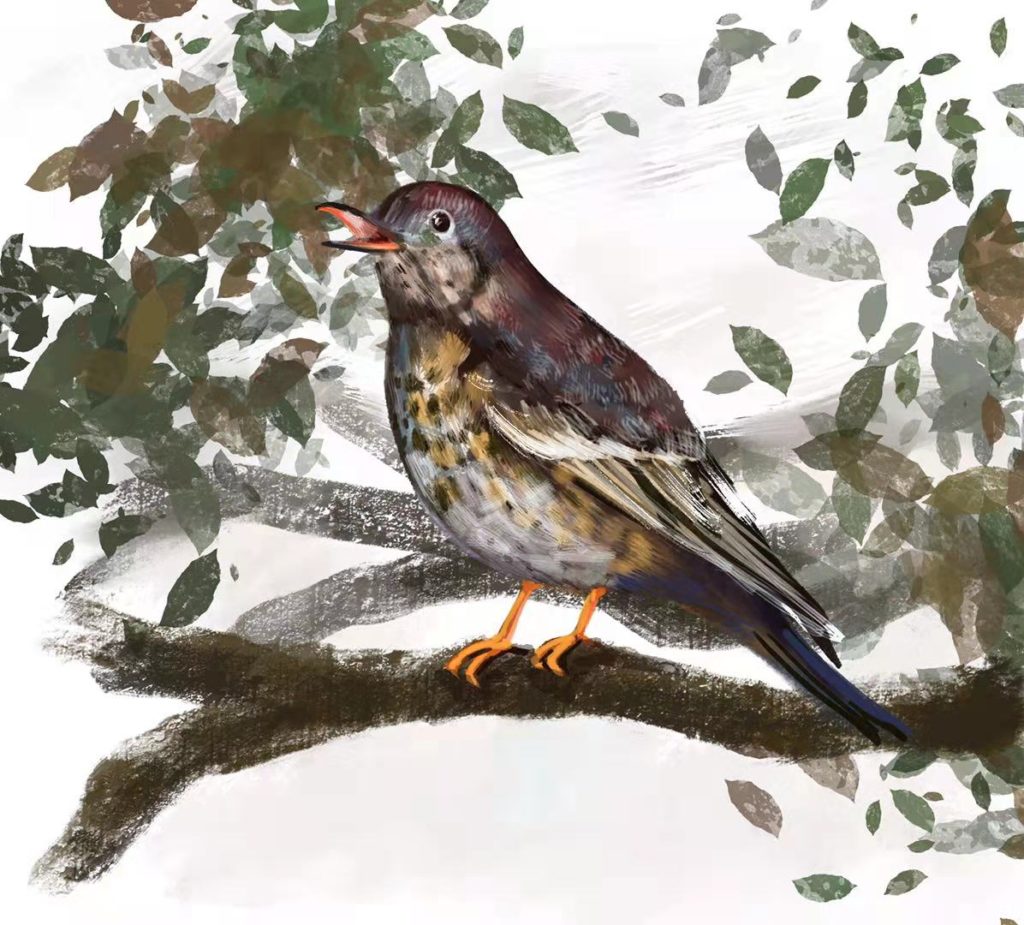
“Rather good.”
Philip Larkin
Ruth Pitter was a popular British poet throughout much of the twentieth century, publishing from the early 1930s until her death in 1992. Her life encompassed both world wars and she has been studied not only because of her lovely poetry, but also because of her association with important literary and historical figures. Of particular interest for us in light of today’s poem, she enjoyed a long friendship and correspondence with C.S. Lewis (he of The Chronicles of Narnia fame). After the second world war, their friendship was to result in her spiritual awakening, and Pitter came to share Lewis’ Christian beliefs. On reading the poem, you may decide it’s quite easy to understand Stormcock in Elder as a metaphor for Pitter finding faith; but as you will see, this isn’t the only way to appreciate the beauty of this poem:
In my dark hermitage, aloof
From the world’s sight and the world’s sound,
By the small door where the old roof
Hangs but five feet above the ground,
I groped along the shelf for bread
But found celestial food instead:
For suddenly close at my ear,
Loud, loud and wild, with wintry glee,
The old unfailing chorister
Burst out in pride of poetry;
And through the broken roof I spied
Him by his singing glorified.
Scarcely an arm’s-length from the eye,
Myself unseen, I saw him there;
The throbbing throat that made the cry,
The breast dewed from the misty air,
The polished bill that opened wide
And showed the pointed tongue inside;
The large eye, ringed with many a ray
Of minion feathers, finely laid,
The feet that grasped the elder-spray;
How strongly used, how subtly made
The scale, the sinew, and the claw,
Plain through the broken roof I saw;
The flight-feathers in tail and wing,
The shorter coverts, and the white
Merged into russet, marrying
The bright breast to the pinions bright,
Gold sequins, spots of chestnut, shower
Of silver, like a brindled flower.
Soldier of fortune, northwest Jack,
Old hard-times’ braggart, there you blow
But tell me ere your bagpipes crack
How you can make so brave a show,
Full-fed in February, and dressed
Like a rich merchant at a feast.
One-half the world, or so they say,
Knows not how half the world may live;
So sing your song and go your way,
And still in February contrive
As bright as Gabriel to smile
On elder-spray by broken tile.
The poem begins in a dark, silent world. Living in ahermitage (meaning ‘a small and remote dwelling’), the speaker describes herself as aloof, which means ‘distant’ or ‘uninvolved.’ Her circumstances are unnaturally cramped: her house has only a small door and the roof is a mere five foot above ground, impossible to stand in without stooping. It hangs, giving it a precarious – even dangerous – quality. The speaker can neither hear nor see; in a telling image she has to grope along the shelf for bread. In this image, her need for food is more about needing spiritual nourishment; it’s not her body that is hungry but her spirit or soul. Things only change when she encounters celestial food instead. This cryptic phrase introduces the poem’s title bird, the Stormcock who, sitting in an elder tree outside her home, sings to her through the patches in the broken roof. The symbolism is pretty obvious – celestial basically means sky, but has connotations of heaven as well. On hearing the bird’s song for the first time, it’s as if God has suddenly shone a light into her life.
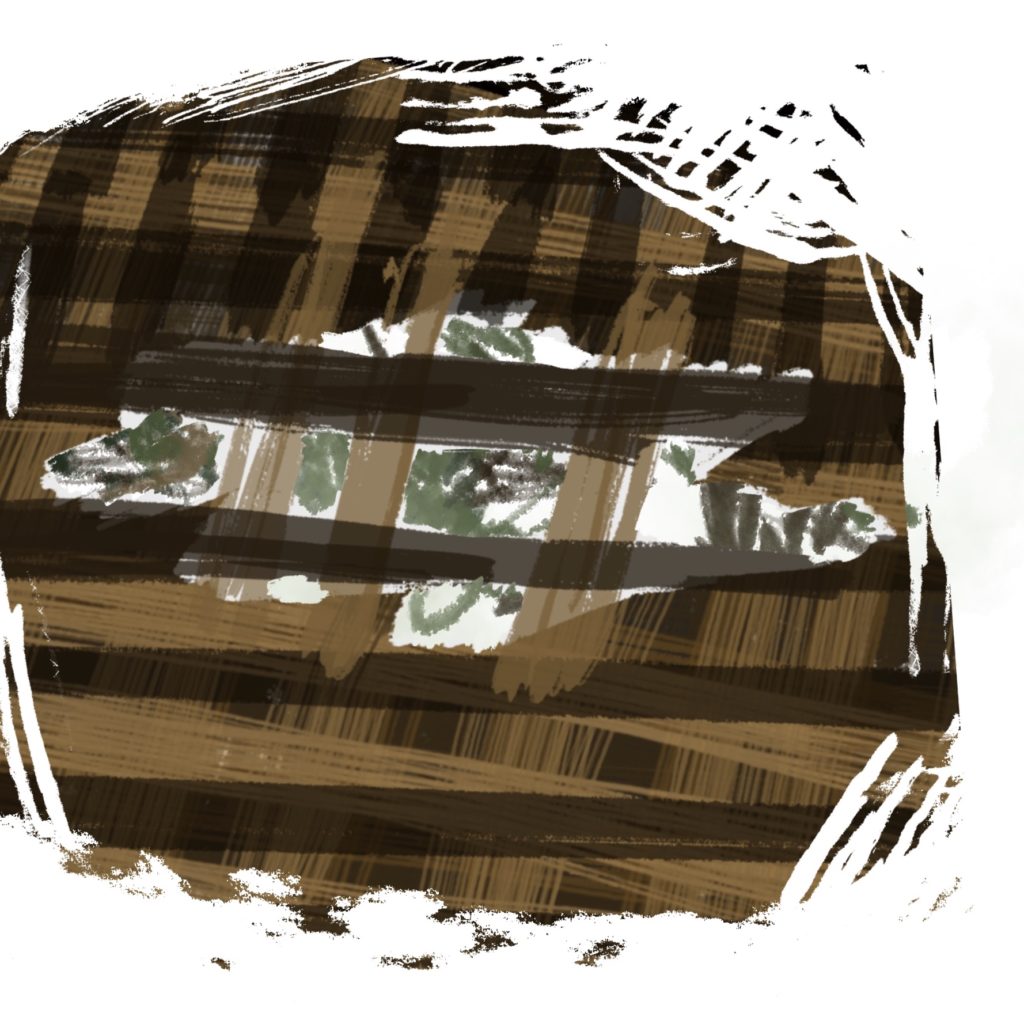
The second stanza is not shy about reinforcing this impression. The word suddenly marks the point at which the tone changes. Where the speaker seemed isolated and aloof, suddenly she has a voice close at my ear. Where she lived in quiet solitude, the repetition of loud, loud and the phrase burst out create a contrast with stanza one. Words with positive connotations suggest her shift from spiritually bereft (groping) to ecstatic (glee) in the presence of religion (chorister, glorified). However, before we throw all of our eggs in the religious basket, we may want to consider other symbolic meanings for the Stormcock as well. For instance, Pitter describes his song as a ‘pride of poetry.’ Where do poets get their ideas? Greek myth has up to nine muses (benign female goddesses) who would gift poets a laurel branch, special knowledge and a poetic ‘voice’. While we have seen how the poem is overtly religious in diction, here it offers another idea; that the Stormcock is Ritter’s poetic muse, gifting her the inspiration she needs to come out of her confinement and express herself to the full.
You can quite easily follow Pitter’s descriptions over the next few stanzas, as they all have a clear sequence and structure. Firstly, she concentrates on the bird’s physical appearance. Look how the third stanza takes four elements of the bird – his throat, breast, beak and tongue – and adds descriptive detail to each one in the form of concrete images. We can see the throat throbbing; almost touch the beads of moisture dewed from the misty air on his feathery breast; imagine the smooth, shiny texture of his polished bill and even get close enough to see his tongue is pointed and sharp. These images mix up the visual and tactile senses, making the descriptions real and vibrant. Pitter wants us to appreciate how well formed the bird is – remember, she believes the world has a creator, and the Stormcock is proof of God’s design. Nowhere is this more evident than when the speaker lingers on the bird’s eye and we are given an extra-long description:
The large eye, ringed with many a ray
Of minion feathers, finely laid
Alliteration plays a huge part in conveying the speaker’s impression here: R in large, ringed and ray; M and N in ringed, many, minion; F in feathers, finely. All are tied together using assonant A and Y (large, ray, many, laid) which creates an effect called euphony (the blending of harmonious consonant and vowel sounds).

The rest of stanza four seems like more of the same, but I like the way the descriptions keep our eyes roving over different parts of the bird. It almost seems like we need to keep flicking our gaze this way and that, as if he is shifting in the way birds do on the branch (elder-spray). Ritter employs more and more precise terms – scale, sinew, claw, minion feathers, flight-feathers, coverts, pinions – to suggest close, detailed and intimate knowledge of the bird. The structure of one or two of these sentences helps mimic the jumps and hops of a small bird; never still, always flicking its head, tail and feathers this way and that. Take a look at the fifth line of stanza four to see how the list-like structure (the scale, the sinew, the claw) with its articles and commas creates this effect. Ritter maintains the euphonic sound patterns in this line too, adding sibilant S and assonant A and Y from words such as spray, strongly, subtly to those in scale, sinew and claw.
The fifth stanza initially continues the physical descriptions (notice how it is a continuation of the fourth – look closely for the semi-colon). However, partway through the second line, Pitter gives us a brief caesura.This is a deliberate break in the middle of a line of poetry, marked by a comma before the word ‘and’. Afterward the caesura, the focus changes away from technical detail to an appreciation of the bird’s colourful beauty: white, russet (a kind of reddish-brown), gold, chestnut, silver, brindled (reddish-brown again). The word bright is repeated to dazzle the eye, and the whole visual image is exemplified by the simile like a brindled flower. Like Gerard Manley Hopkins, who saw nature as proof of God’s creativity, Pitter achieves a kind of dual meaning through her descriptions. On one hand she praises the beauty of the Stormcock: you can see this when she uses words like silver and gold, implying the bird is rare, precious and fine. On the other, she is praising God as well as the bird itself. Look at the way the colour has been applied to the bird: spots, sequins and shower makes it seem as if the bird has been deliberately adorned or embellished with eye-pleasing colours by a skilful creator. This idea is made explicit in the line: how subtly made.
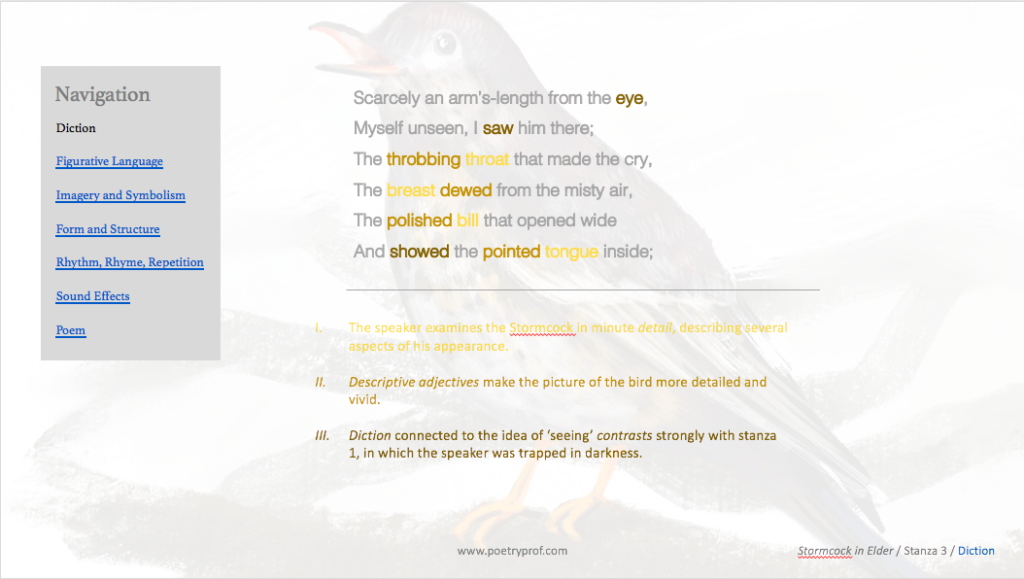
The introduction of obvious figurative language at the end of stanza five (this is the first time we’ve seen the word ‘like’ signalling a simile) makes it plain, if you hadn’t suspected already, that the bird must stand for something more than itself. Pitter repeats the trick in the next stanza, giving us like a merchant at a feast – and the third: as bright as Gabriel. Our Stormcock, then, is most definitely a symbol and, given what we know about Pitter’s spiritual development, a religious one too. To begin with her life was narrow, enclosed and dark; through connecting to God her life is transformed into a blaze of riotous colour. The simile of the bird being as bright as angel Gabriel is a giveaway in this interpretation; the Angel Gabriel was God’s herald to Mary (a herald is a kind of messenger, and the Stormcock can certainly be seen to fulfil that role for the speaker). A less obvious religious allusion is the word pinions that describes the outer part of a bird’s wings to which the primary flight feathers are attached: the line ‘a great eagle with great wings and long pinions’ is attributed to Ezekiel in the bible. Elsewhere in the poem, though, religious symbolism is less overt and you might prefer to appreciate the meaning of the Stormcock without referring to religion. For example, you may think the Stormcock functions like an animal companion or spirit guide, connecting the speaker to life outside the constraints of her own making and bringing her out of her self-imposed exile.
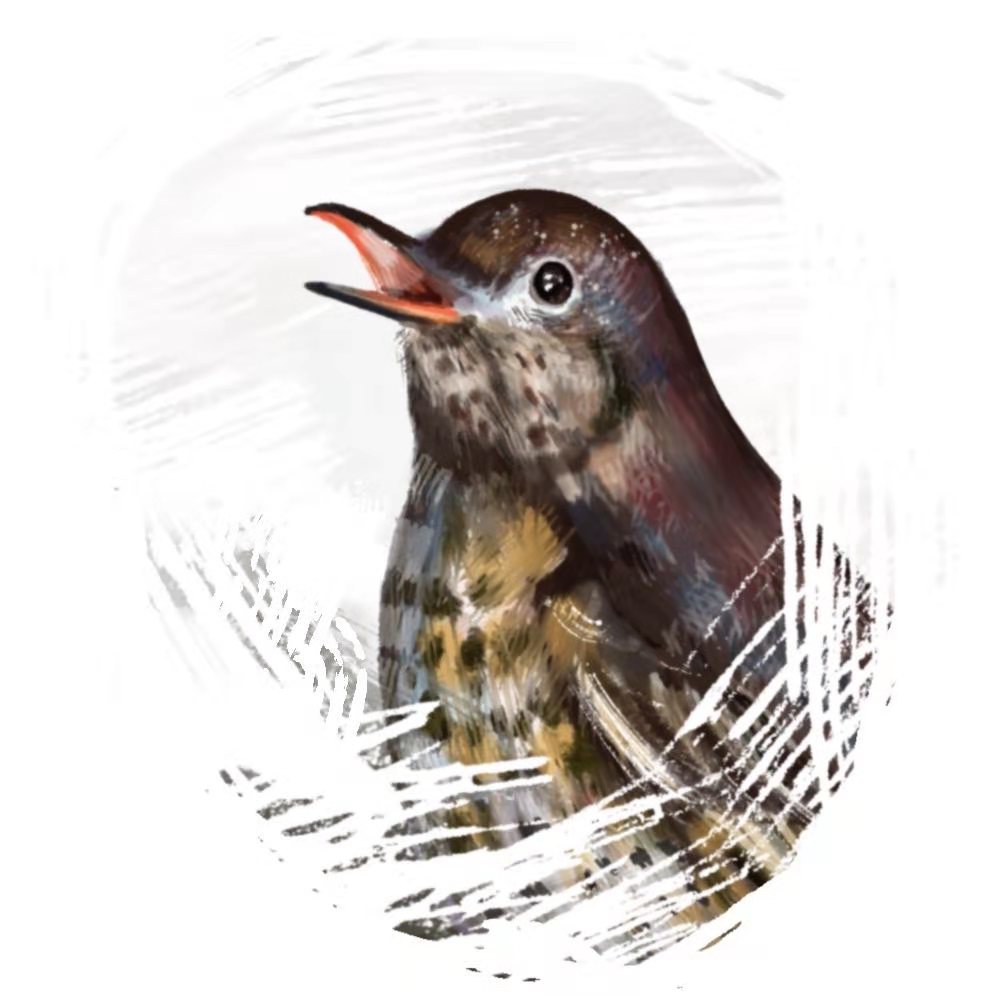
Whatever your take on the meaning of the bird, Pitter suggests that meeting with the Stormcock is a kind of revelation, an eye-opening moment. The final line of the first stanza introduced an important word: found. Take a look at the last two lines of the first few stanzas and you’ll see this word reiterated in various forms: verse two gives us spied; verse three showed and the fourth saw. The fifth dispenses with simple diction hinting that the speaker’s eyes have been opened and elects to just describe the bird using dazzling visual imagery instead. By the time we get to the sixth stanza, the speaker even enjoys bantering with the Stormcock (braggart, tell me) as if he can hear her and give reply.
The way she strongly personifies the bird (apart from braggart, she imagines him as a Soldier of Fortune, names him Jack and pretends he is a bagpipe player) emphasises the role companionship plays in a fulfilled life. Go right back to stanza two and you’ll see the seeds were sown in the line ‘old unfailing chorister.’ It’s as if he’s an old friend who, despite not being seen for a while, can be counted on to reappear whenever he is most needed. The sixth stanza is a complete mirror of the first: instead of groping for the barest food the speaker is now able to imagine herself at a feast, suggesting that companionship ‘nourishes’ the soul. Remember, Pitter had been a lifelong friend with C.S. Lewis and it is he who brought her to her religion later in her life.
The description full-fed, also in the sixth verse, compounds the idea that the bird is a kind of spiritual ‘nourishment.’ The description reminds us of the first impression the speaker gave us of the bird as a kind of celestial food. When the end of a poem refers to the start it is called loop composition, and both full-fed and feast contrast with the plain and spare bread in the opening stanza. We should briefly discuss the contribution of rhyme; Pitter was a formal poet, writing in the style of her literary predecessors Yeats and Larkin rather than modernist poets who were, at the same time as she was writing, blazing a new trail. In this poem, rhyme adds a strong aural dimension to the descriptions of the bird, creating ‘full’ pleasing sounds that are both rich (like that nourishing feast) and resemble the sound of his singing. And the rhyme scheme helps us trace the theme of the poem too. Each stanza’s pattern of rhyme goes ABABCC, and all those words to do with ‘finding, seeing and knowledge’, as well as the figurative metaphors, are in the final rhyming couplets of each verse.
Proof of God’s existence; muse; angel; inspiration; companion; herald; spirit guide. Stormcock in Elder presents all of these possibilities to a greater or lesser extent. This is one of those poems where the real-life experiences of the poet, especially in terms of her religious convictions, find their way into the voice of the poem’s speaker. But that doesn’t mean you have to take it at face value. One of the great things about poetry, or any literature, is that it allows us a window into a time and place that may be very different from our own. We may or may not believe in an all-powerful creator or share Pitter’s Christian faith. But that doesn’t stop us appreciating Stormcock in Elder as a magnificent piece of artwork itself – a fitting tribute to the beauty of the nature, and a symbol of companionship that Ruth Pitter’s speaker needed so badly in her life.
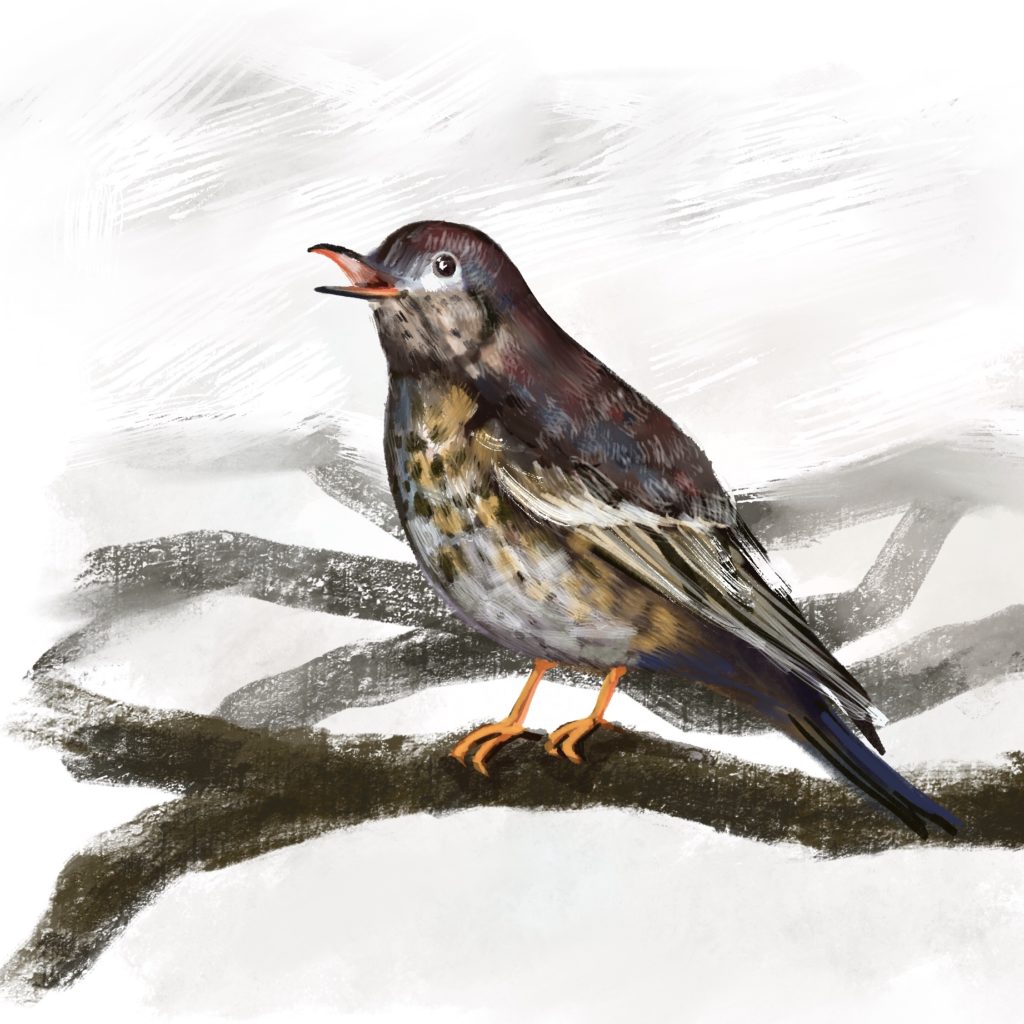
Suggested poems for comparison:
- Pied Beauty by Gerard Manley Hopkins
Hopkins believed that nature represented the marvellous creativity of God, and his poems often paid tribute to that idea through vivid and creative descriptions of the natural world. Pied Beauty is one of his most famous poems: like Pitter, he was fond of the word ‘brindled’ – see if you can find it here.
- Thirteen Ways of Looking at a Blackbird by Wallace Stevens
One of the most famous poems about our feathery friends, Steven’s poem provides a myriad of symbolic meanings for the blackbird for you to ponder over.
- The Raven by Edgar Allen Poe
If you haven’t read this poem yet, I urge you to take a look at this fantastic gothic masterpiece. A story of how you cannot hold onto everything you love lest it destroy you, this is the poem that brought us the haunting refrain, “Nevermore…”
Additional Resources
If you are teaching or studying Stormcock In Elder at school or college, or if you simply enjoyed this analysis of the poem and would like to discover more, you might like to purchase our bespoke study bundle for this poem. It’s only £2 and includes:

- 4 pages of activities that can be printed and folded into a booklet for use in class, at home, for self-study or revision.
- Study Questions with guidance for how to answer in full paragraphs.
- A sample Point, Evidence, Explanation paragraph for essay writing.
- An interactive and editable powerpoint, giving line-by-line analysis of all the poetic and technical features of the poem.
- An in-depth worksheet with a focus on metaphor, simile and personification.
- A fun crossword-quiz, perfect for a recap lesson or for revision.
- 4 practice Essay Questions – and one complete model Essay Plan.
And… discuss!
You’ve read what we think of Ruth Pitter’s poem; why not add your own ideas? What do you think the Stormcock symbolises? What do you think the lesson of her poem might be? Leave a comment, ask a question or share your thoughts in the comments below. And, for daily nuggets of analysis and all-new illustrations, don’t forget to find and follow Poetry Prof on Instagram.
very helpful
So helpful. Thank you
amamzing and helpful wowwwwww this was a great explanation!!!!!
Hi Alize, I’m really glad you like it. Thank you for your comment :o)
very good